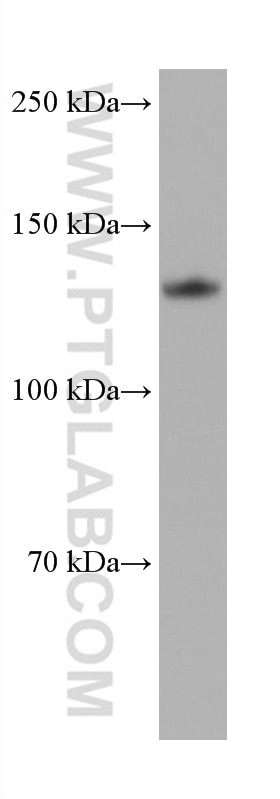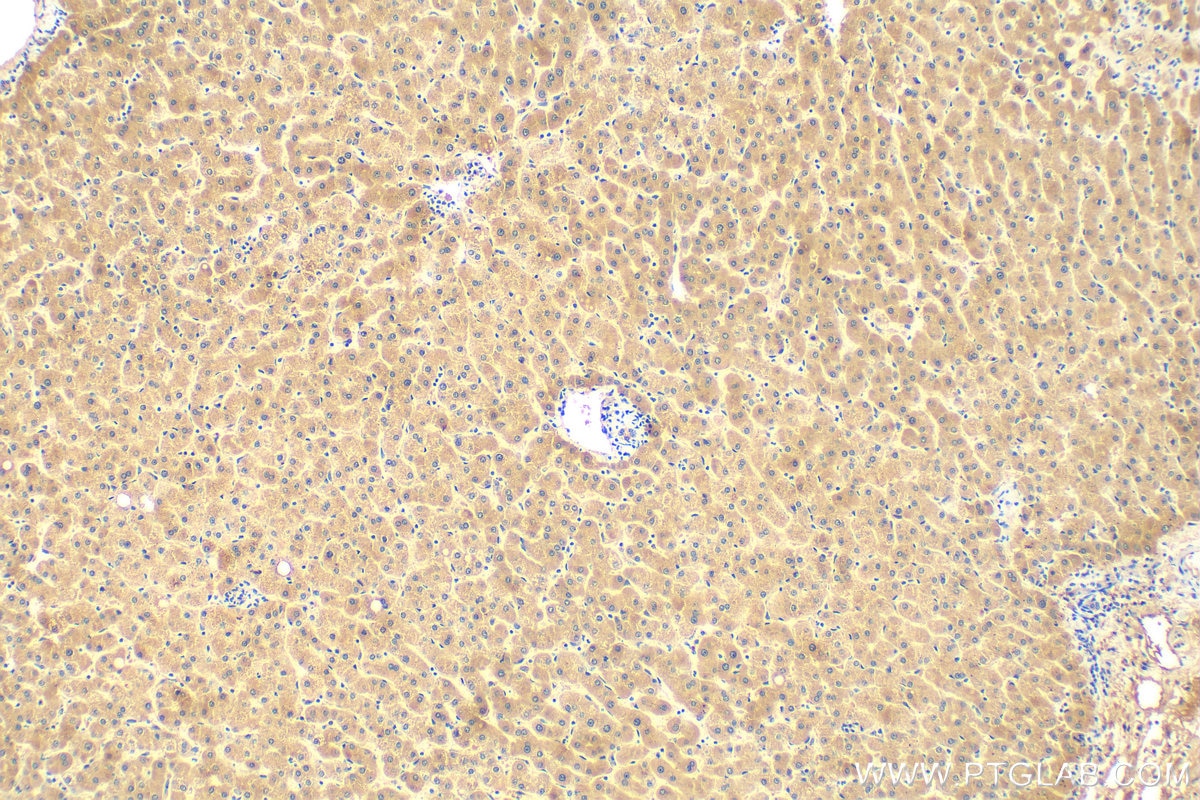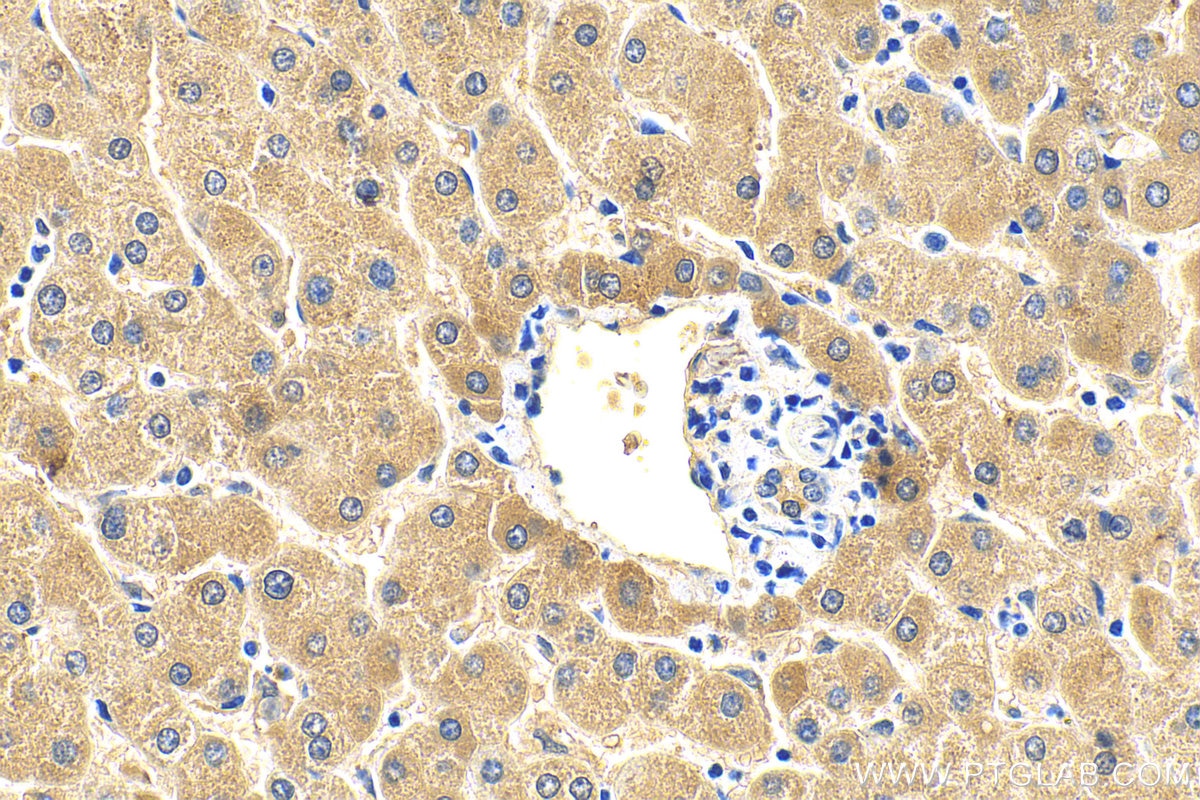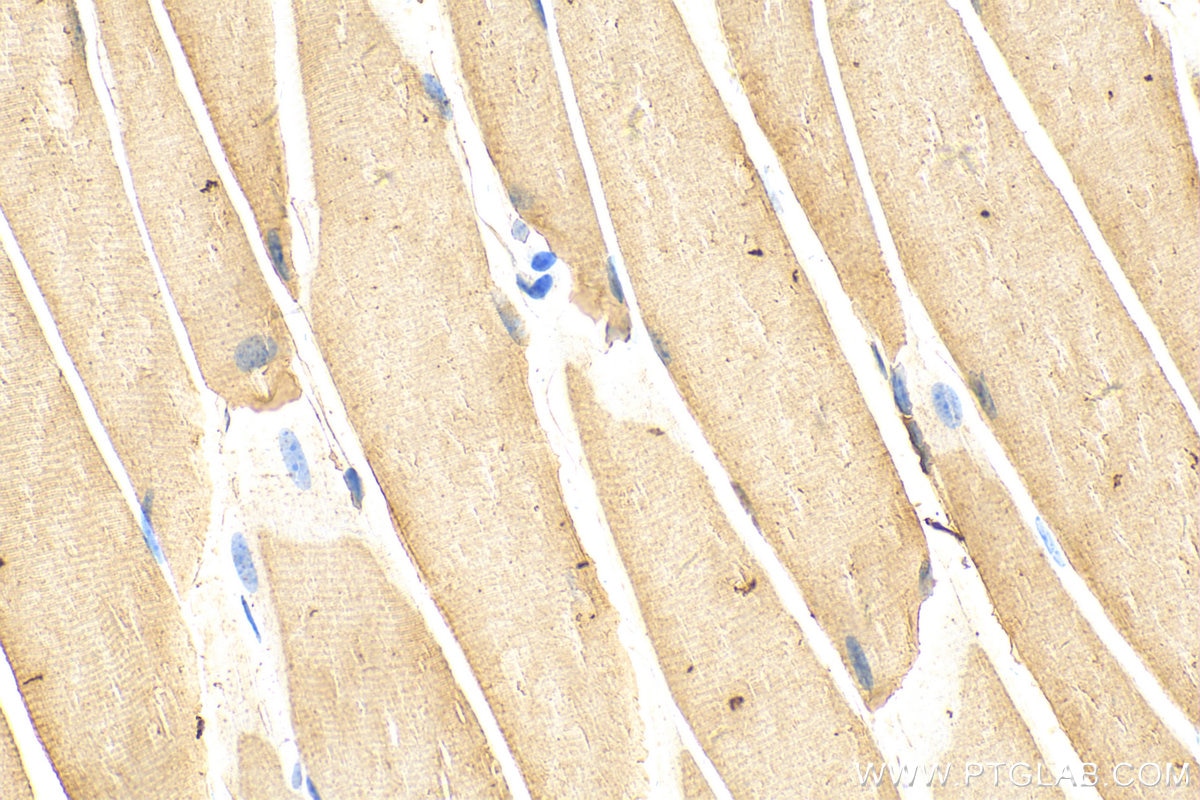ULK1 Monoklonaler Antikörper
ULK1 Monoklonal Antikörper für WB, IHC, ELISA
Wirt / Isotyp
Maus / IgG1
Getestete Reaktivität
human, Maus, Ratte
Anwendung
WB, IHC, ELISA
Konjugation
Unkonjugiert
CloneNo.
1D7G1
Kat-Nr. : 68445-1-Ig
Synonyme
Geprüfte Anwendungen
| Erfolgreiche Detektion in WB | A549-Zellen, HeLa-Zellen, Jurkat-Zellen, LNCaP-Zellen, NIH/3T3-Zellen, PC-12-Zellen, PC-3-Zellen, T-47D-Zellen |
| Erfolgreiche Detektion in IHC | humanes Lebergewebe, Maus-Skelettmuskelgewebe Hinweis: Antigendemaskierung mit TE-Puffer pH 9,0 empfohlen. (*) Wahlweise kann die Antigendemaskierung auch mit Citratpuffer pH 6,0 erfolgen. |
Empfohlene Verdünnung
| Anwendung | Verdünnung |
|---|---|
| Western Blot (WB) | WB : 1:5000-1:50000 |
| Immunhistochemie (IHC) | IHC : 1:50-1:500 |
| It is recommended that this reagent should be titrated in each testing system to obtain optimal results. | |
| Sample-dependent, check data in validation data gallery | |
Veröffentlichte Anwendungen
| WB | See 6 publications below |
Produktinformation
68445-1-Ig bindet in WB, IHC, ELISA ULK1 und zeigt Reaktivität mit human, Maus, Ratten
| Getestete Reaktivität | human, Maus, Ratte |
| In Publikationen genannte Reaktivität | human, Maus |
| Wirt / Isotyp | Maus / IgG1 |
| Klonalität | Monoklonal |
| Typ | Antikörper |
| Immunogen | ULK1 fusion protein Ag22397 |
| Vollständiger Name | unc-51-like kinase 1 (C. elegans) |
| Beobachtetes Molekulargewicht | 130-150 kDa |
| GenBank-Zugangsnummer | NM_003565 |
| Gene symbol | ULK1 |
| Gene ID (NCBI) | 8408 |
| Konjugation | Unkonjugiert |
| Form | Liquid |
| Reinigungsmethode | Protein-G-Reinigung |
| Lagerungspuffer | PBS with 0.02% sodium azide and 50% glycerol |
| Lagerungsbedingungen | Bei -20°C lagern. Nach dem Versand ein Jahr lang stabil Aliquotieren ist bei -20oC Lagerung nicht notwendig. 20ul Größen enthalten 0,1% BSA. |
Hintergrundinformationen
ULK1, also named as KIAA0722, belongs to the protein kinase superfamily, Ser/Thr protein kinase family and APG1/unc-51/ULK1 subfamily. It is involved in autophagy. ULK1 is required for autophagosome formation. It forms a stable complex with Atg13 and focal adhesion kinase (FAK) family interacting protein of 200 kDa (FIP 200)(PMID:21460634). ULK1 phosphorylates ATG13/KIAA0652. It is involved in axon growth. ULK1 plays an essential role in neurite extension of cerebellar granule cells. ULK1 represents a potential novel prognostic biomarker for HCC patients and may play an important role during the progression of HCC(PMID:23573318).
Protokolle
| PRODUKTSPEZIFISCHE PROTOKOLLE | |
|---|---|
| WB protocol for ULK1 antibody 68445-1-Ig | Protokoll herunterladen |
| IHC protocol for ULK1 antibody 68445-1-Ig | Protokoll herunterladenl |
| STANDARD-PROTOKOLLE | |
|---|---|
| Klicken Sie hier, um unsere Standardprotokolle anzuzeigen |
Publikationen
| Species | Application | Title |
|---|---|---|
Am J Physiol Cell Physiol ITGA3 participates in the pathogenesis of recurrent spontaneous abortion by downregulating ULK1-mediated autophagy to inhibiting trophoblast function | ||
Nat Nanotechnol Autophagosomes coated in situ with nanodots act as personalized cancer vaccines | ||
J Agric Food Chem Lactobacillus plantarum SMUM211204 Exopolysaccharides Have Tumor-Suppressive Effects on Colorectal Cancer by Regulating Autophagy via the mTOR Pathway | ||
iScience Aberrant STING activation promotes macrophage senescence by suppressing autophagy in vascular aging from diabetes | ||
Sci Rep Punicalagin relieves hepatic injury by antioxidation and enhancement of autophagy in diet-induced nonalcoholic steatohepatitis | ||
ACS Infect Dis Pec 1 of Pseudomonas aeruginosa Inhibits Bacterial Clearance of Host by Blocking Autophagy in Macrophages |










